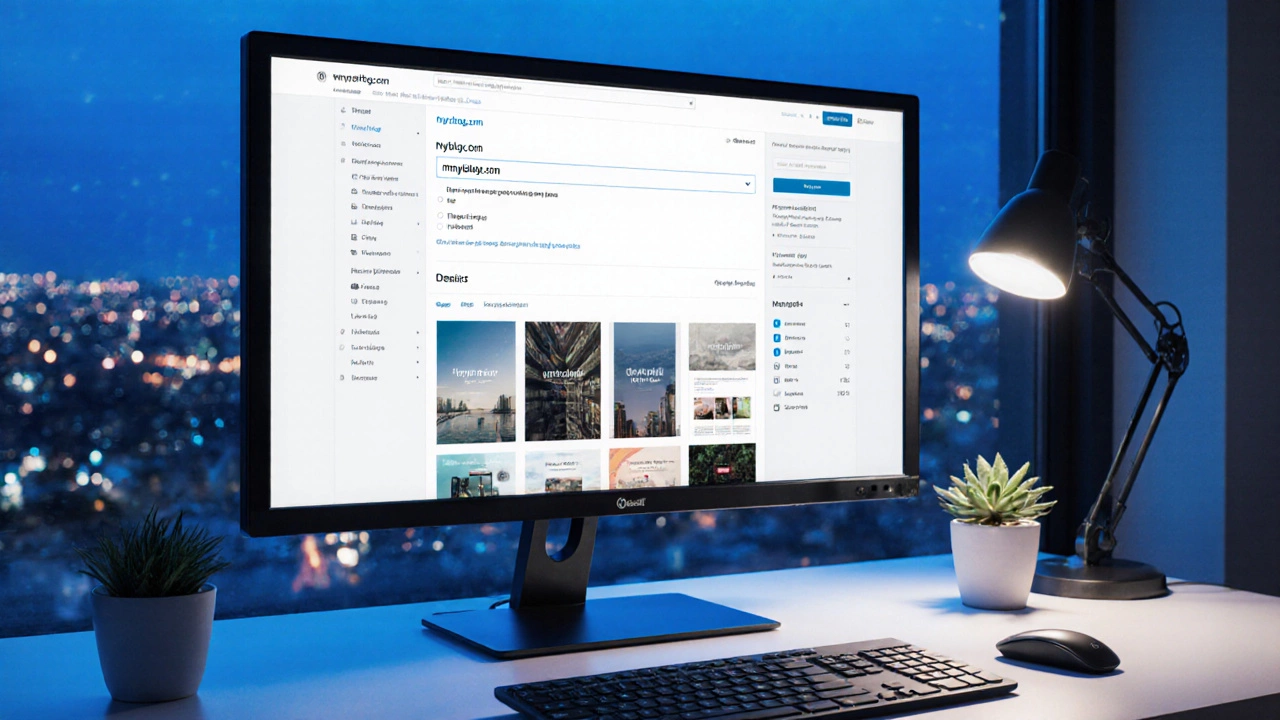Blogging Platform Selector
Recommended Platform
Platform Details
Why This Works For You
Want to share your ideas, build a community, or even turn a hobby into a side‑income? The good news is that you can start blogging with almost no technical background. This guide walks you through every decision a total newbie faces, from picking a platform to publishing the first post and getting visitors.
Key Takeaways
- Choose a platform that matches your technical comfort and growth goals.
- Define a clear niche and audience before you write anything.
- Set up a custom domain and basic SEO settings within the first hour.
- Publish at least three high‑quality posts before promoting.
- Track traffic with analytics and iterate on content based on data.
What Exactly Is Blogging?
Blogging is a form of online publishing where individual posts appear in reverse‑chronological order. Unlike static websites, blogs are designed for frequent updates and reader interaction.
A blog is the collection of those posts, usually centered around a theme or personal voice. The person who writes and manages the blog is called a blogger.
Pick the Right Platform
For beginners, the biggest hurdle is choosing where to host your content. A Content Management System (CMS) handles the technical bits-like storing posts and rendering pages-so you can focus on writing.
Below is a quick comparison of three popular, free‑to‑start options. All three are trusted by millions and require no coding.
| Platform | Ease of Use | Custom Domain Support | Monetization Options | Typical Users |
|---|---|---|---|---|
| WordPress.com | Very easy, drag‑and‑drop editor | Yes (with paid plan) | Ads, affiliate, premium content | Beginners to professionals |
| Blogger (by Google) | Simple, limited customization | Yes (free subdomain, paid custom domain via Google Domains) | AdSense integration only | Casual hobbyists |
| Medium | Super‑clean editor, no design work | No (uses Medium subdomain) | Partner program, subscription revenue | Writers focused on audience over branding |
If you plan to grow a brand or sell products later, WordPress.com is the most flexible. If you just want a personal journal, Blogger or Medium work fine.

Define Your Niche and Audience
Before you type a single line, ask yourself two questions:
- What specific subject do I enjoy enough to write about weekly?
- Who am I writing for, and what problem am I solving for them?
Choosing a narrow niche (e.g., "budget travel for solo women" instead of just "travel") helps search engines and makes it easier to attract a loyal audience.
Your ideal reader profile-age, interests, pain points-is your audience. Write a one‑sentence persona and keep it visible on your desk when drafting posts.
Set Up Your Blog - The First 60 Minutes
Once the platform is chosen, follow these quick steps:
- Register a custom domain. Even on a free plan, buying a domain (e.g., myblog.com) looks professional and boosts SEO.
- Connect the domain through the platform’s DNS settings. Most hosts provide a guided wizard.
- Select a clean, responsive theme. Avoid heavy graphics; they slow down loading speed, which hurts SEO.
- Enable essential plugins or built‑in features: SEO settings, RSS feed, and social sharing buttons.
- Write a concise “About” page that tells visitors who you are, what you’ll cover, and why they should care.
These actions take less than an hour and lay the technical groundwork for growth.
Craft Your First Content
Content is the heart of any blog. Here’s a simple workflow that works for beginners:
- Brainstorm 10 post ideas that solve a specific problem for your audience.
- Pick three that you can realistically finish in the next week.
- Draft each post using the platform’s editor, aiming for 800‑1,200 words. Use short paragraphs, bullet points, and sub‑headings for readability.
- Incorporate basic SEO practices: a target keyword in the title, one H2, and naturally throughout the copy.
- Add a relevant, high‑quality image (free from Unsplash or Pexels) and write an alt‑text that describes the image and includes the keyword if appropriate.
- Proofread, then hit publish.
Publish at least three posts before you start heavy promotion. This gives readers something to explore and signals search engines that your site is active.
Promote, Track, and Iterate
Even the best post stays invisible without traffic. Use these low‑cost tactics:
- Social media: Share each post on the platforms where your audience hangs out. Add a personal comment rather than just the link.
- Engage in communities: Answer questions on Reddit, Quora, or niche forums and include a link when relevant.
- Email capture: Offer a free checklist or ebook in exchange for an email address. Even 50 subscribers are a solid base.
- Basic analytics: Install Google Analytics or the platform’s built‑in stats. Track page views, bounce rate, and traffic sources.
After a month, review which posts get the most clicks and which keywords drive them. Update older posts with fresh data or better headings to improve rankings.
Common Pitfalls & Pro Tips
Pitfall #1: Posting without a schedule. Inconsistent publishing confuses readers and search engines. Aim for at least one post per week and use a simple editorial calendar.
Pitfall #2: Ignoring SEO basics. Skipping meta titles, descriptions, and alt‑texts leaves value on the table. Use the platform’s SEO settings or a free plugin.
Pro tip: Repurpose content. Turn a popular blog post into a short video, a podcast episode, or an infographic. You’ll reach new audiences without creating from scratch.
Pro tip: Build backlinks early. Reach out to fellow bloggers for guest posts or link exchanges. One or two high‑quality backlinks can boost authority quickly.
Frequently Asked Questions
Do I need to know how to code to start a blog?
No. Platforms like WordPress.com, Blogger, and Medium let you create and style posts with drag‑and‑drop editors. You only need code if you want deep customisation.
Should I buy a domain right away?
Yes. A custom domain looks professional, improves trust, and helps with SEO. It’s cheap-usually under £10 per year.
How long before I see traffic?
Expect a modest trickle for the first few weeks. Consistent publishing, basic SEO, and promotion typically yield 100-200 visitors per month after one month.
Can I monetize my blog as a beginner?
Yes, but start with low‑friction options: affiliate links, sponsored reviews, or a simple ad network like Google AdSense once you have at least 500 monthly visitors.
What’s the best way to choose a niche?
Combine passion with market demand. Use tools like Google Trends or AnswerThePublic to see how many people search for topics you love.
Launching a blog isn’t rocket science, but it does need a clear plan, a little patience, and the willingness to learn from data. Follow the steps above, stay consistent, and you’ll watch your readership grow day by day.
